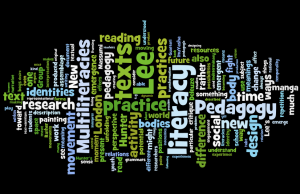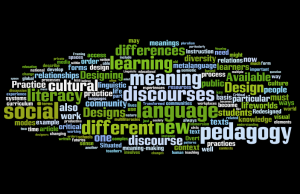Technology is advancing and the use of multiliteracies in classrooms are increasing. Adolescents (and adults, for that matter) spend more time in front of a computer screen than in front of a printed book, especially since Web 2.0 and Web 3.0 have surfaced. Throughout history, there’s been anxiety around issues surrounding literacy, particularly when focusing on adolescents. When television came into existence, society assumed that adolescent’s literacy levels would decrease. The same anxiety appeared with the invention of computers, laptops, cellphones, etc…. I argue that such anxiety is present because society generally thinks of literacy as reading and writing only. All forms of literacy—whether visual, digital, etc…—are important, and to have students literate in multiple forms of literacies should be paid attention to within a classroom setting.
In terms of literacy as reading, why does it matter what one is reading? Whether one is reading young adult literature, e-books, signs, text messages, or labels, one’s literacy is developing, is it not? I would argue that reading anything is better than reading nothing at all. The same argument can be applied to writing. However, this does not mean that I am suggesting that students write and read at a lower level; instead, I am saying that placing the blame on the internet is unnecessary. For example, many argue that plagiarism has increased because of the internet. Rather than blaming the internet, wouldn’t it be more effective to instruct students on plagiarism? And, rather than dismissing Wikipedia, wouldn’t it be more effective if we taught students to use it as a starting point? Wikipedia is a great resource/tool but should not be privileged over academic articles, and this should be further reinforced by the teacher.
Moreover, I strongly believe that adolescents are more aware/educated now than they were a few centuries ago. The world of knowledge is at their fingertips. Nowadays, there’s a “how to” video on almost every subject/topic on YouTube, which I find phenomenal. Furthermore, to say that adolescents are not intelligent to use register is discriminatory towards a group of people. Being able to switch back and forth between standard English and informal speech is a skill. The same logic applies to texting; “Textspeak” must also be valued because it too is a particular skill. Again, the role of the teacher is important here. Teachers should teach their students to be able to write both formally and informally rather than value one over the other.

